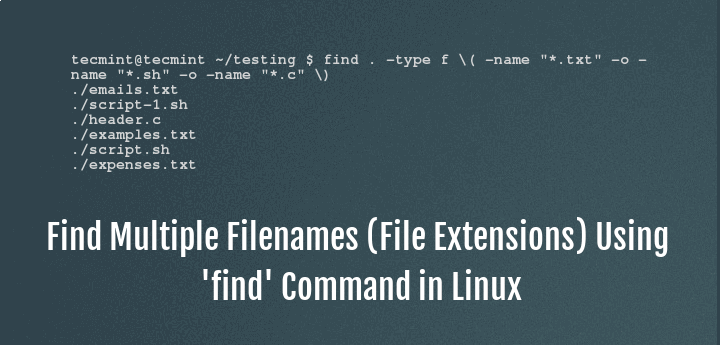

- CONSOLE COMMAND FIND FILE LINUX HOW TO
- CONSOLE COMMAND FIND FILE LINUX INSTALL
- CONSOLE COMMAND FIND FILE LINUX UPDATE
- CONSOLE COMMAND FIND FILE LINUX CODE
CONSOLE COMMAND FIND FILE LINUX CODE
Note that you must replace the with actual values in the following code examples to run the examples. Search results must meet at least one of the two conditions This command uses regular expressions, for more information please see, the Section called Regular. Furthermore, an OR link can be used or a condition can be negated: r or rgrep - search for text within files recursively. Here, a logical AND operation is implicitly assumed. The find command can only filter the directory hierarchy based on a file’s name and metadata. Several search parameters can also be combined. Use grep to Find a File in Linux Based on Content. Below, you’ll find an overview of the most commonly used search parameters: This is followed by a space and the value of the parameter. A search parameter consists of a hyphen that is immediately followed by the name of the parameter.
CONSOLE COMMAND FIND FILE LINUX HOW TO
Subscribe to TechRepublic’s How To Make Tech Work on YouTube for all the latest tech advice for business pros from Jack Wallen.First, the command itself is written, followed by a directory path, and a variable number of search parameters. For more information, make sure to read the man page with the command man find. Using the find command isn’t the most intuitive means of locating files from the command line, but once you get used to it, you’ll find it incredibly powerful and useful.
CONSOLE COMMAND FIND FILE LINUX INSTALL
Run the following command to install locate: sudo yum install mlocate.
CONSOLE COMMAND FIND FILE LINUX UPDATE
Midnight Commander provides a capable file viewer which can be accessed. Update the package repository: sudo yum -y update.
It works only ifIf you want to prune multiple directories, you’d have to make use of a regular expression like this: find / ( -path /proc -o -path /run -o -path /snap ) -prune -false -o -name 'dev.conf' Although this will still include directories like /run and /snap (which would unlikely house your file), the output would be significantly easier to comb through and locate your file. We’ll demonstrate how to use find, locate, which, whereis, whatis, and apropos. What that command does is search the entire filesystem for a file named dev.conf, but leaves out the /proc directory in the process. Linux How to Use All Linux’s Search Commands Dave McKay Updated Sep 16, 2019, 7:05 pm EDT 14 min read Fatmawati Achmad Zaenuri/ Linux offers six different ways to search, and each has its merits. So all you really need to know is how to use the command effectively. Such a command might look like: find / -path /proc -prune -false -o -name 'dev.conf' When it comes to finding a particular file or set of files, the find command is your best friend on Linux. To fix that we have to make use of a few options to prune away directories like /proc and get a bit more specific. Because of this, the output of the command will be far too long to be useful. The problem with that command is it’s not only going to search every directory in the hierarchy, it’ll also include directories (such as /proc) that most certainly won’t house your file.

Using the find command you could do a quick search through the entire filesystem with the command: find / dev.conf Let’s say you have a file named dev.conf and you can’t remember where you saved it.

SEE: A guide to The Open Source Index and GitHub projects checklist (TechRepublic Premium) How to use the built-in find command Let me show you how to use this built-in command. The find command is a powerful search command that can easily help you find the files you’re looking for. Your best bet is to make use of the built-in CLI search tools, such as find. Where did you leave that one particular configuration file you were just working on? You could start poking around in the directories that you assume might house the file using the ls command, but that could take far more time than you’d like to spend on this quest. Oracle Linux checklist: What to do after installation This Linux learning path will help you start using the OS like a proītop is a much-improved take on the Linux top command Open-source repository SourceHut to remove all cryptocurrency-related projects


 0 kommentar(er)
0 kommentar(er)
